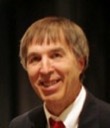
I am from a farming community in rural Minnesota. My family moved to a suburb of St. Paul before I entered Junior High School. From that time, I think there were two factors that were important to my becoming a chemist. First, my family was always interested in why things happen as they do and we would often discuss them at the dinner table. The second was a field trip I had as a senior in high school to General Mills. (I had already shown enough interest to be selected for the field trip.) I had an all day tour with a Mr. Heinz Arnold (I still remember my host's name). Two things happened from that tour. One was that it was very interesting with all of the measuring, instruments, etc. The other was that I had the sense of, "I can do this."
After high school, I went to the University of Minnesota. I majored in chemistry and had minors in math and anthropology. I had a job at the U of M in the Biochemistry Department on the Agricultural Campus. In my lab job, I performed a number of assays on the milks of various species. Then, I went to the State University of New York at Buffalo (SUNYAB) and received a PhD in Medicinal Chemistry. I chose to work with Richard Finnegan on an organic chemistry project. It was the use of Grignard reagents in the synthesis of lactones. I synthesized nepatalactone, the active ingredient in 'catnip'. From SUNYAB, I went to two post-doctoral positions. The first was at the University of Rochester with Richard Schlessinger. Schlessinger was interested in the synthesis of a number of interesting alkaloids of the day. I worked on a methodology project, the use of some sulfoxides as carbonyl anion equivalents. The second post-doc was at Temple University with John Williams. We studied ring strained steroid analogs, an offshoot of his interest in photochemistry.
I then started my industrial career at American Cyanamid in Princeton, NJ, studying herbicides and plant growth regulants. This was a very rewarding and enlightening time. I liked working in the agricultural field. My father started as a farmer and my uncle was actively farming and this personalized my company’s objectives. Cyanamid also had programs to foster communication between the agricultural division and the medical division so I was made aware of the similarities and differences in the agricultural and medical research objectives.
I was fortunate to have been involved in a project that resulted in several very successful commercial products. Cyanamid had sales of several hundred million of dollars and had a dominant position in the soybean herbicide market. My supervisor, Marinus Los, was awarded a 'Presidential Medal of Honor' by President Clinton in recognition of the value of his invention. My industrial experience also taught me the path for the creation of new products. It is my belief that success is "self fulfilling prophecy".
At Monmouth University, I was interested in continuing aspects of enzyme inhibition and capitalizing on knowledge that was attained from my industrial experience. I was interested in enzyme targets that could be used in undergraduate research. I was also interested in examining the kinetics of 'slow tight binding' and feedback inhibition. Other projects were related to chemical structures and reaction mechanisms.
In addition to laboratory research, I became interested in student responses to teaching. As a professor, I was probably more of an experimentalist than a teacher. It was my opinion that teaching was an experiment in student responses to classroom stimuli.